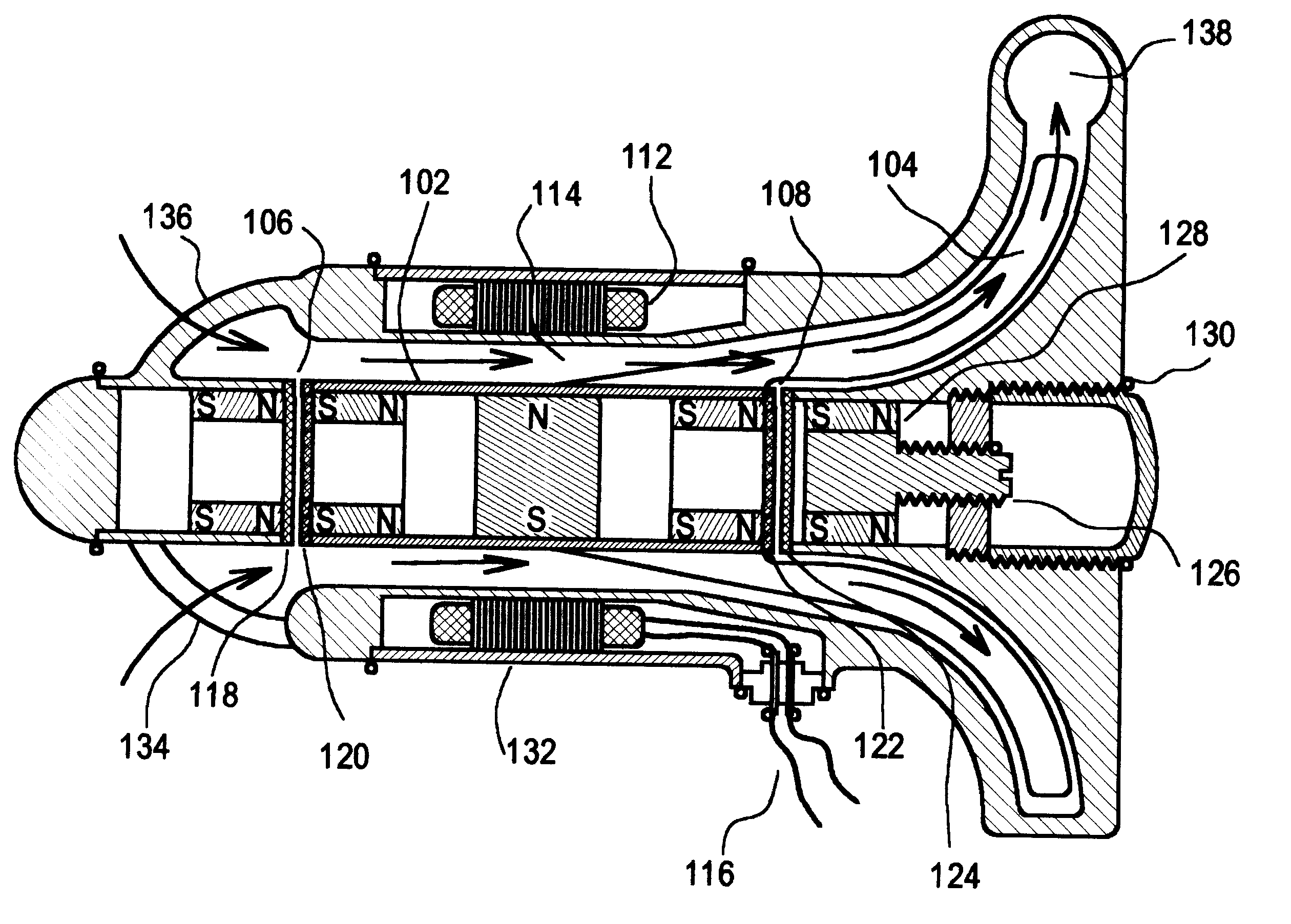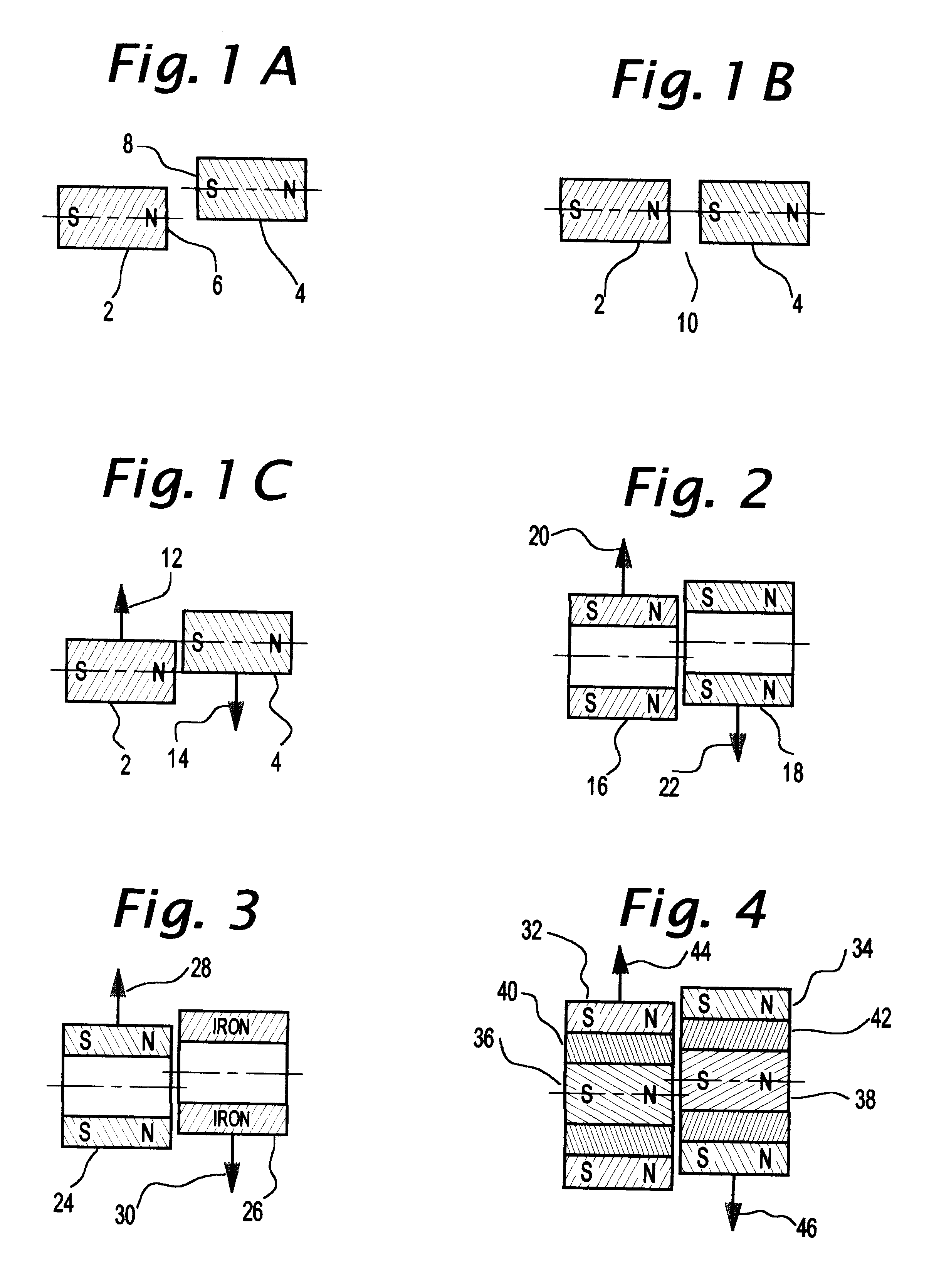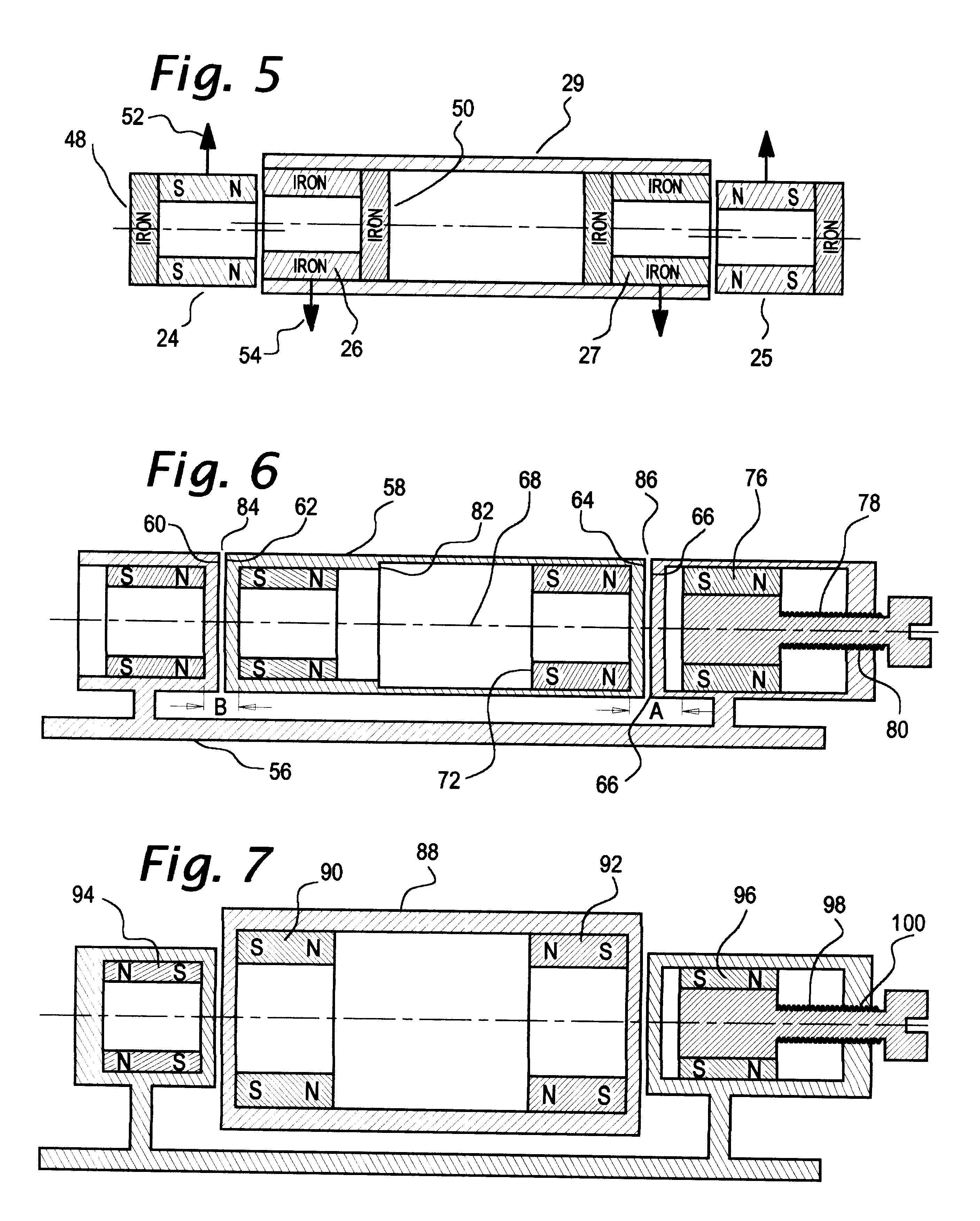Axial force null position magnetic bearing and rotary blood pumps which use them
a magnetic bearing and axial force technology, which is applied in the direction of positive displacement liquid engine, piston pump, prosthesis, etc., can solve the problems of limited radial bearing stiffness, rotors of these devices are subject to either radial or axial displacement, and none of these or other fully magnetic suspension blood pumps have proved clinically successful
- Summary
- Abstract
- Description
- Claims
- Application Information
AI Technical Summary
Benefits of technology
Problems solved by technology
Method used
Image
Examples
Embodiment Construction
FIGS. 8 & 9 illustrate the preferred embodiments of the invention in which axial force null position magnetic bearings are used to radially suspend the rotors of centrifugal and axial flow blood pumps. Referring to FIG. 8, a magnetic bearing arrangement similar to that shown in FIG. 6 supports a rotor 102, with a centrifugal pump impeller 104, by two pairs of ring magnets at each end of said rotor generally indicated at 106 and 108. A permanent magnet 110 utilized as part of a two pole electric motor which drives the impeller is magnetized side to side as illustrated. It is located midway on the impeller to maximize its separation from the magnetic bearing components at each end so that the magnetic forces of interaction between the motor magnet and bearing magnets will be low. A motor armature 112, having laminations and coils is disposed around the rotor and a annular channel 114 through which blood flows occupies the space between the said armature and the rotor. An electric cabl...
PUM
 Login to View More
Login to View More Abstract
Description
Claims
Application Information
 Login to View More
Login to View More - R&D
- Intellectual Property
- Life Sciences
- Materials
- Tech Scout
- Unparalleled Data Quality
- Higher Quality Content
- 60% Fewer Hallucinations
Browse by: Latest US Patents, China's latest patents, Technical Efficacy Thesaurus, Application Domain, Technology Topic, Popular Technical Reports.
© 2025 PatSnap. All rights reserved.Legal|Privacy policy|Modern Slavery Act Transparency Statement|Sitemap|About US| Contact US: help@patsnap.com



